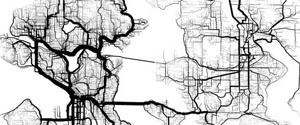Challenge 5: 3D tumour Mapping
3D tumour mapping
Cancer Grand Challenges is a global funding platform supporting scientists to take on the toughest challenges in cancer. Through a series of £20 ($25) million awards, we are giving international teams of researchers the freedom to think differently, act creatively and explore novel techniques.
Tumours aren’t just composed of cancer cells – they contain a complete life support system, called the tumour microenvironment, without which the cancer cells wouldn’t survive. If we could pull the plug on the tumour’s life support, it would kill it - but first, we need to identify the crucial components.
In 2015, one of our Cancer Grand Challenges was:
MAP THE MOLECULAR AND CELLULAR TUMOUR MICROENVIRONMENT IN ORDER TO DEFINE NEW TARGETS FOR THERAPY AND PROGNOSIS
This challenge is now closed for applications.
Contact us
If you have a question about Cancer Grand Challenges please get in touch by emailing info@cancergrandchallenges.org
 Challenge 5: 3D tumour Mapping
Challenge 5: 3D tumour Mapping